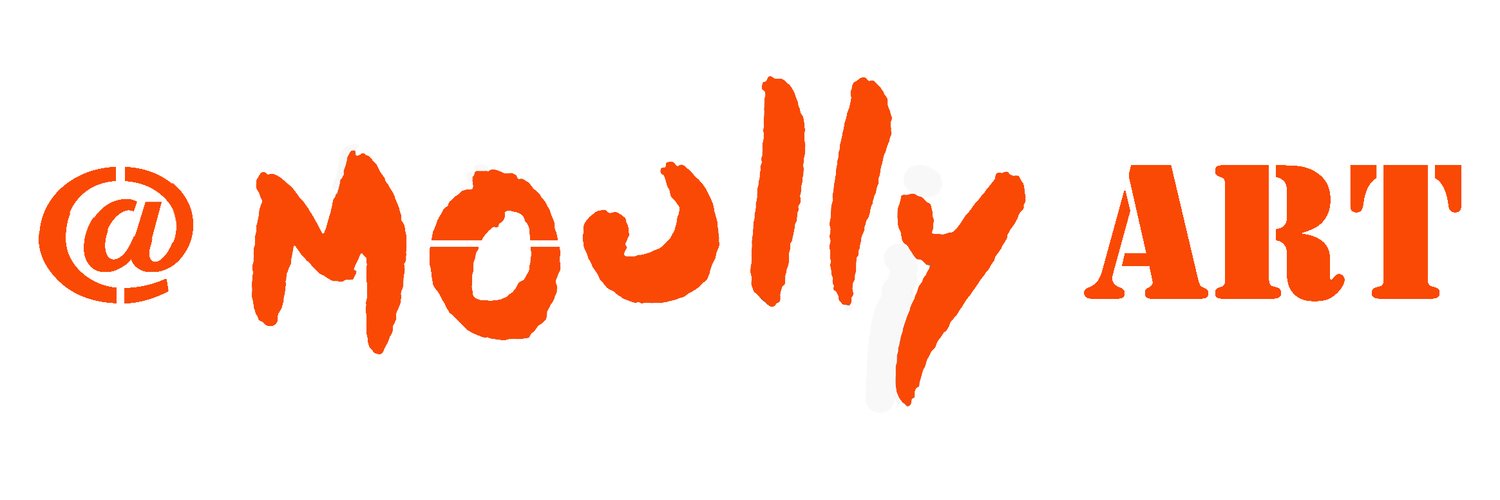Chasidic Rabbi Uses Canvas to Express Two Seemingly Different Worlds
By Sara Trappler-Spielman February 27, 2008
Like his art, Chabad-Lubavitch Rabbi Yitzchok Moully is composed of many layers.
At a recent showing of his work at a small, brightly lit gallery in Lambertville, N.J., Moully – who weaves through the large crowd of mingling art fans and community members – stands out in a bright pink yarmulke, orange socks and dark suit accentuated with a green tie. His paintings, likewise, cast a sea of color upon the patrons of the ArtisZen Arts gallery who came to the post-Shabbat Saturday night event.
"Yitzchok has a fantastic eye for color," says David Golderg, who describes himself as an early fan of Moully. "He captures moments in time on canvas."
Although influenced by many sources, Moully, who might be better known by some people as the youth director at the Chabad Jewish Center in Basking Ridge, N.J., prefers the silkscreen medium and use of every-day objects that defined American pop art in the 1960s. ArtisZen owner Brian Hanck compared Moully's technique to that of Andy Warhol, but whereas the iconic artist featured cans of soup and pictures of famous people, Moully relies on images from Chasidic Jewish culture: His work displays Chanukah dreidels, kiddush cups, rabbis praying and Chasidim dancing.
One of his most impressive pieces, Williamsburg, N.Y., features New York City's Williamsburg bridge as a divider between a Brooklyn neighborhood's two worlds – a Chasidic community on one side and an artist's colony on the other. You can clearly see in the painting a metaphor for Moully's unique station in life.
"I feel comfortable in both worlds," says Moully. "When I go to galleries, it gives me energy to paint, to express my message.
"And then I go find a minyan to pray with and a kosher pizza shop to eat at."
The 29-year-old photographer and father of three never attended art school, but has been painting for about three years. He uses his own digital photographs, which he hand prints and screens above two layers of painted background. Two years ago, he began exhibiting in galleries and community centers in New Jersey, New York and Pennsylvania. After the ArtisZen showing – located across the Delaware River from the frequent Warhol haunt of New Hope, Pa. – Moully's work will be on display next month at the J. Klaynberg Gallery in New York. An artist's reception there will take place April 3.
Moully's local Jewish community were his first supporters. After he completed his first piece, he brought it to local professional artist Marian Slepian. She was immediately impressed.
It was "infused with all the warmth and joy that Chasidim have," says Slepian, one of the guests at ArtisZen. In addition, his style of photo reproduction done entirely by hand "is so new that you can't classify it yet. It's a new world to me."
ArtisZen owner Brian Hanck is thrilled with the evening's turnout and believes Moully will find success both within the Jewish community and beyond. He says many non-Jewish customers have purchased copies of Moully's Tree of Life, which can be appreciated universally.
"I like to think I'm bringing the next Warhol character into the community," notes Hanck. "People get [Moully's work]. They smile when they see his stuff. He's applying the Warhol tradition and making it his own."
From Australia's Outback to a New York Yeshiva
Raised on a commune in the Australian outback with a self-described hippie family, Moully enjoyed an alternative lifestyle as a child. When his grandfather became ill, the family returned to Melbourne, where Moully's mother attended a class in Chasidic thought at a local synagogue. Soon after, she enrolled her young son in a Chabad-Lubavitch day school in the city. The grandfather died on Moully's first day at the new school.
The rabbi-artist views the timing of his grandfather's death as, "passing on the Jewish tradition."
When Moully was five years old, the family intended to move to Israel to further cement their embrace of their rediscovered identity. In Moully's words, the move was an attempt "to combine two passions: a love of nature and of Judaism."
They stopped in New York during their journey and wrote to the Rebbe, Rabbi Menachem Mendel Schneerson, of righteous memory, to ask for advice regarding their trip. The Rebbe, says Moully, advised the family to remain in New York.
As a young boy, Moully attended the local Chabad-Lubavitch yeshiva, Oholei Torah. Every year on his birthday, he would attend the Rebbe's farbrengen, or inspirational Chasidic gathering, in the synagogue of Lubavitch World Headquarters. Every Shabbat morning, he would stand in line "to say 'Good Shabbos' to the Rebbe as he came out to pray."
Adds the artist: "Then, I'd go outside to play."
Five years after stopping in New York, the Moully family returned to Melbourne. Eventually, Moully went back to the states as a teenager to study at the Rabbinical College of America, a Chabad-Lubavitch yeshiva in Morristown, N.J.
In his paintings, Moully attempts to unite Judaism and modern day life. He brings together seemingly unconnected images, like a piece of gefilte fish next to a slice of sushi, a Zippo lighter next to Shabbat candles, a martini next to a kiddush cup. All of the combinations will appear in the series he is currently working on, aptly titled Kosher and Funky .
The dichotomy, though, is merely on the surface. In truth, says Moully, the physical and spiritual worlds are deeply intertwined: "In essence, both worlds are not so disparate. Our task is to take the physical world and infuse it with spirituality."

